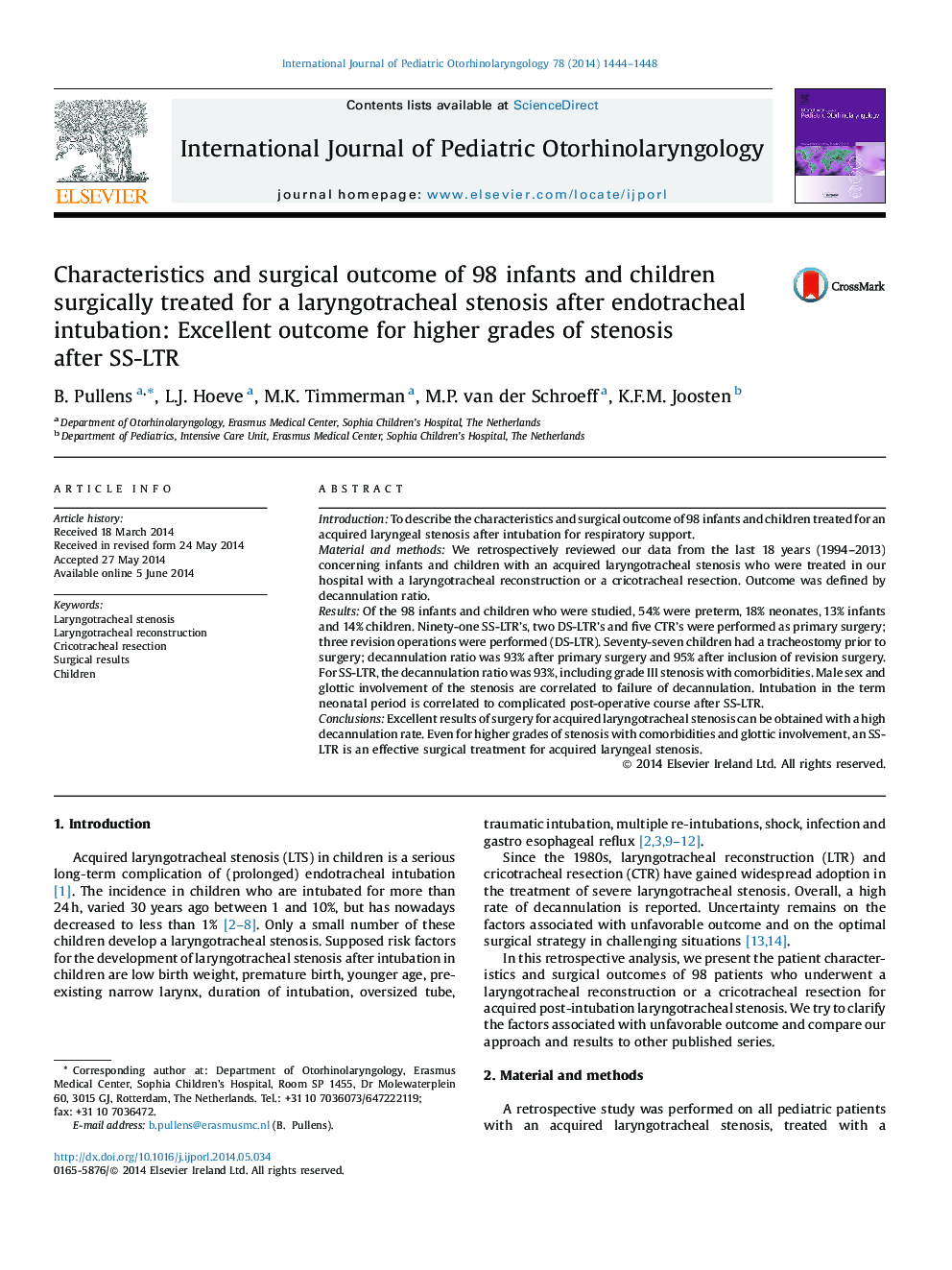| Article ID | Journal | Published Year | Pages | File Type |
|---|---|---|---|---|
| 4112807 | International Journal of Pediatric Otorhinolaryngology | 2014 | 5 Pages |
IntroductionTo describe the characteristics and surgical outcome of 98 infants and children treated for an acquired laryngeal stenosis after intubation for respiratory support.Material and methodsWe retrospectively reviewed our data from the last 18 years (1994–2013) concerning infants and children with an acquired laryngotracheal stenosis who were treated in our hospital with a laryngotracheal reconstruction or a cricotracheal resection. Outcome was defined by decannulation ratio.ResultsOf the 98 infants and children who were studied, 54% were preterm, 18% neonates, 13% infants and 14% children. Ninety-one SS-LTR’s, two DS-LTR’s and five CTR’s were performed as primary surgery; three revision operations were performed (DS-LTR). Seventy-seven children had a tracheostomy prior to surgery; decannulation ratio was 93% after primary surgery and 95% after inclusion of revision surgery. For SS-LTR, the decannulation ratio was 93%, including grade III stenosis with comorbidities. Male sex and glottic involvement of the stenosis are correlated to failure of decannulation. Intubation in the term neonatal period is correlated to complicated post-operative course after SS-LTR.ConclusionsExcellent results of surgery for acquired laryngotracheal stenosis can be obtained with a high decannulation rate. Even for higher grades of stenosis with comorbidities and glottic involvement, an SS-LTR is an effective surgical treatment for acquired laryngeal stenosis.
